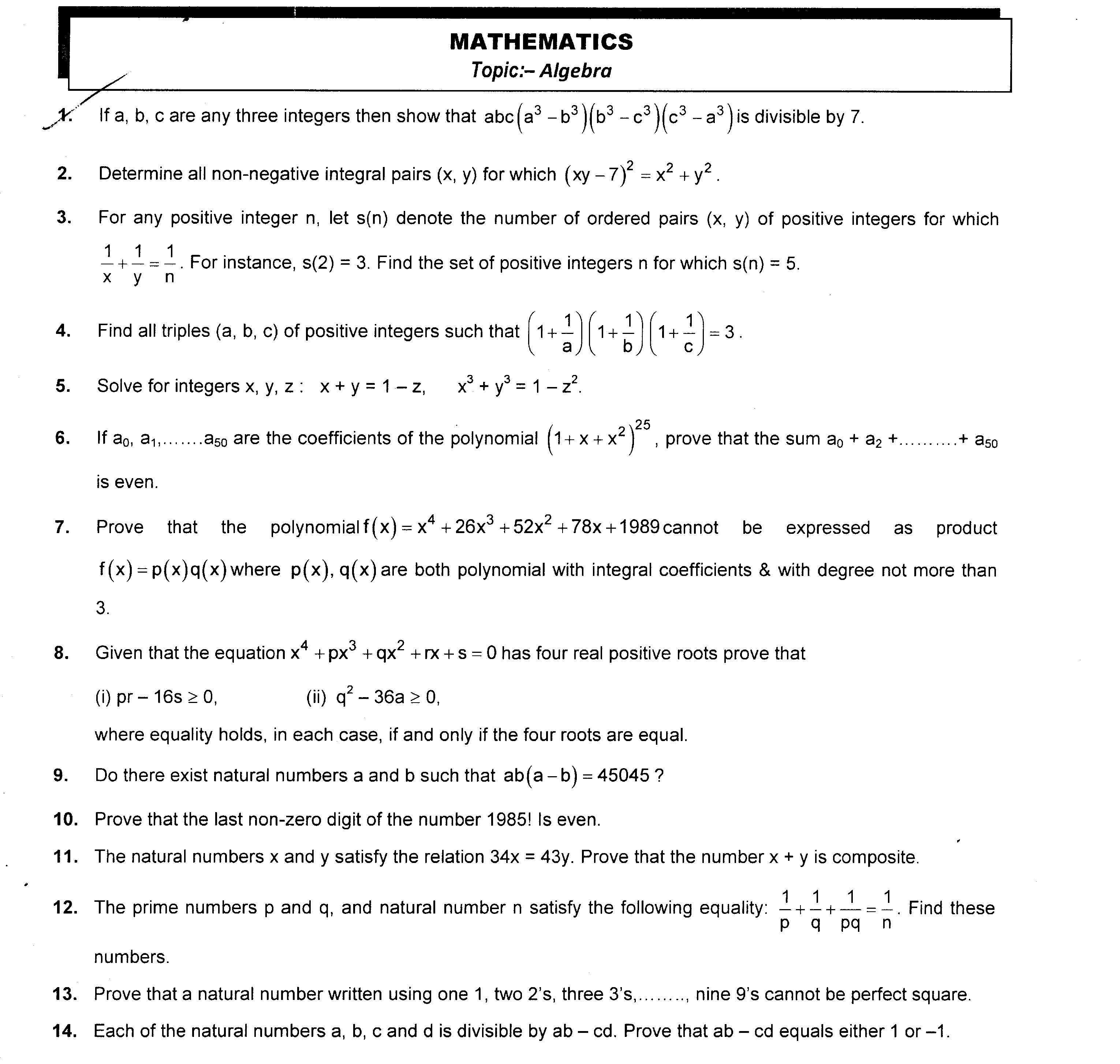Maths RMO Problems(1)........
Hey friends.
I mean Brilliantians I am back with some amazing problems which are generally asked in the RMO-INMO level examination .I am sharing the image of the paper containing the questions.
Please try and if possible send the solutions
.Also it would be great if you all participate in sharing the questions from your own. I would also be sharing problems based on NSEP level. Thanks

Dont forget to share and like this.............
No vote yet
1 vote
Easy Math Editor
This discussion board is a place to discuss our Daily Challenges and the math and science related to those challenges. Explanations are more than just a solution — they should explain the steps and thinking strategies that you used to obtain the solution. Comments should further the discussion of math and science.
When posting on Brilliant:
*italics*or_italics_**bold**or__bold__paragraph 1
paragraph 2
[example link](https://brilliant.org)> This is a quote# I indented these lines # 4 spaces, and now they show # up as a code block. print "hello world"\(...\)or\[...\]to ensure proper formatting.2 \times 32^{34}a_{i-1}\frac{2}{3}\sqrt{2}\sum_{i=1}^3\sin \theta\boxed{123}Comments
Question 2
(xy−7)2=x2+y2⇒x2y2−14xy+49=x2+y2x2y2−12xy+36+13=x2+y2+2xy(x+y+xy−6)(x+y−xy+6)=13=13×1=1×13=−13×−1=−1×−13(x,y)=(3,4),(4,3),(0,7),(7,0)
Log in to reply
Nice solution................upvoted....
Question 1 xx3≡0,1,2,3,4,5,6(mod7)≡0,1,−1(mod7)
Assume that either of a,b,c is a multiple of 7.
Then obviously abc(a3−b3)(b3−c3)(c3−a3) is a multiple of 7.
So now WLOG assume that a,b,c≡0(mod7).Then a3,b3,c3≡1,−1(mod7).There are 2×2×2=8 different possible cases corresponding to the different values of a3,b3 and c3 modulo 7,which are: Values modulo 7Case 1Case 2Case 3Case 4Case 5Case 6Case 7Case 8a31−11−1−1−111b31−1−11−11−11c31−1−1−1111−1
Observe that,because of the symmetry of the expression,Cases 3,4,5 and Cases 6,7,8 are equivalent.Therefore,we only need to check Case 1,2,3 and 6.Simply evaluate the cases to get that abc(a3−b3)(b3−c3)(c3−a3)≡0(mod7)∀a,b,c∈Z
Log in to reply
Nice solution bro..........upvoted
vmc questions
Question 8(i)
Let the roots be a,b,c,d.(Note that the roots are positive).Then: pqrs=−(a+b+c+d)=ab+ac+ad+bc+bd+cd=−(abc+abd+acd+bcd)=abcd pr−16s≥0⟹(a+b+c+d)(abc+abd+acd+bcd)≥16abcd which follows by applying AM-GM on each term.
I couldn't understand;what does the variable "a" denote in Q 8(ii)?
Question 9 We shall analyze 2 cases. Case 1 Either of a,b is even.
WLOG let a be even.Then ab(a−b)=45045 is even.But 45045 is odd,contradiction. Hence no solutions exist in this case.
Case 2 Both a,b are odd.
Then a−b is even.Therefore ab(a−b)=45045 is even,contradiction.
Hence no solutions exist.
Which grade you in ?
question 11 given 34x=43y =>34x+43x=43(y+x) =>77x=43(x+y) now 43 does not divide 77 hence x+y contains 77 i.e-11*7 hence x+y is not prime.
Log in to reply
That does not exclude the possibility of x+y being odd but not prime
Log in to reply
Can you please explain me what u are trying to say?
Can anyone recommend me some good books for INMO and and other maths olympiad??????????
Q13 The sum of the digits of any number formed using the given conditions is 1 + 4 + 9+ . . . . + 81 = 285 = 3(95) which implies the number is divisible by 3 but not by 3 squared which is 9. Therefore any number formed using the given conditions is not a perfect square